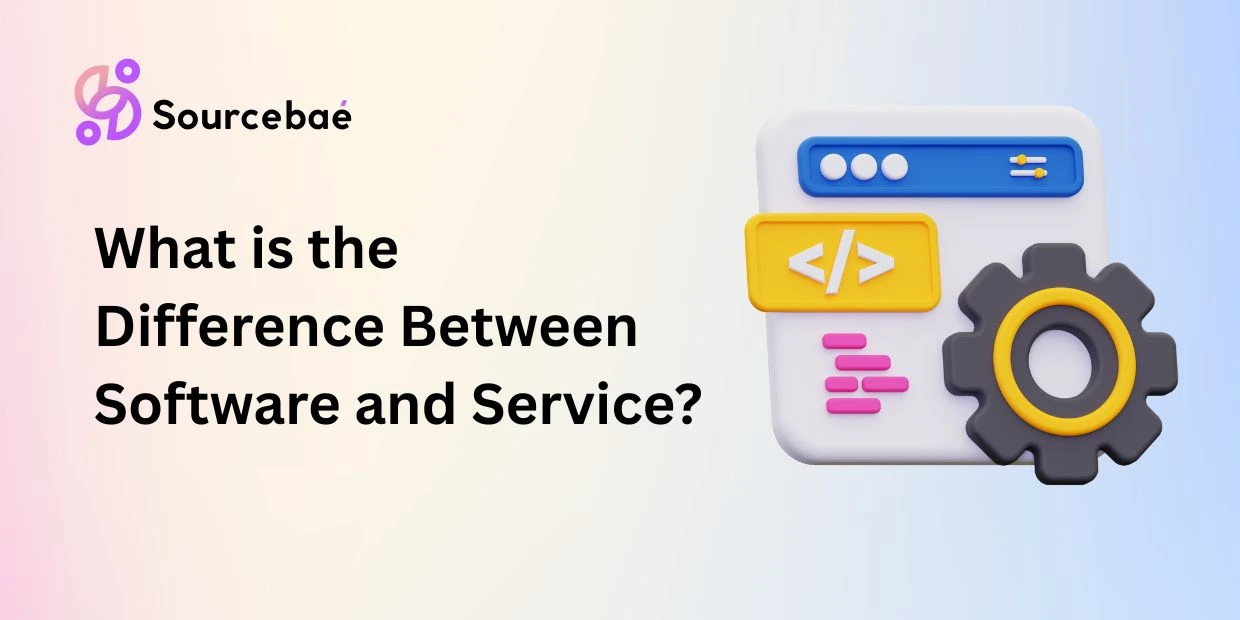In the ever-evolving realm of technology, understanding the difference between software and service is crucial. These terms often intertwine, but they represent distinct entities in the digital landscape. This article elucidates the fundamental disparities between software and service, aiding in a comprehensive comprehension of both.
In the realm of technology, ‘software‘ and ‘service’ are often used interchangeably, creating confusion. However, they represent different facets of the tech world, each with unique features and functionalities.
Software: The Core of Digital Operations
Software refers to a set of instructions, programs, or data used to operate computers and execute specific tasks. It’s the digital backbone of any device, enabling functionality and interaction. From operating systems to applications, software comprises a wide array of tools that empower users to perform various tasks efficiently.
Understanding software involves recognizing its two primary categories: system software and application software. System software governs the device’s hardware and provides a platform for applications to run, while application software is designed for specific tasks, such as word processing, gaming, or browsing.
In essence, software is akin to the blueprint of a building, dictating how the hardware functions and allowing users to interact with their devices seamlessly.
Service: Facilitating Accessibility and Functionality
On the other hand, a service is a broader concept that encompasses a range of functionalities delivered over a network or the internet. Services are intangible and often cloud-based, allowing users to access resources, data, or applications remotely. They are designed to streamline operations, enhance collaboration, and optimize processes.
Services can include cloud computing, web-based applications, email servers, and more. What distinguishes a service from software is its dynamic nature—services are frequently updated, maintained, and improved to align with changing needs and technological advancements.
Imagine a service as a utility, providing the necessary resources and functionalities at your fingertips, irrespective of your location.
The Significance of Software and Service Integration
Understanding the Synergy
In the realm of modern technology, an exciting trend has emerged—the integration of software and service. This collaboration combines the power of software’s structural prowess with the convenience and accessibility of services. Let’s delve into the symbiotic relationship that’s shaping the digital landscape.
The amalgamation of software and service represents a fusion of structural integrity and dynamic accessibility. Software, the robust backbone of devices and operations, provides the stability and functionality needed to perform tasks effectively. On the other hand, services bring flexibility and real-time accessibility to these functionalities, making them available anytime, anywhere.
Leveraging the Best of Both Worlds
Imagine a word processing application as software—a powerful tool residing on your computer, allowing you to draft documents. Now, envision this software integrated into a cloud-based service. This integration not only provides the familiar software-based word processing capabilities but also allows you to access and edit your documents from any device with internet connectivity.
The integration ensures that while the core functionalities are supported by the software, the service layer enhances accessibility, collaboration, and synchronization across devices. It’s a win-win situation, delivering a seamless user experience.
The Role of Integration in Enhancing User Experience
A Holistic Approach
The integration of software and service doesn’t just benefit the providers; it significantly enhances the end-users’ experience as well. The cohesive integration of these elements ensures a holistic and user-centric approach to technology.
Through this integration, users can enjoy the stability and reliability of software along with the flexibility and accessibility of services. They can work on projects using familiar software tools and have the added advantage of accessing and collaborating on their work via a service, eliminating barriers of location and device.
Streamlining Workflows and Processes
Another advantage of integrating software and service is the streamlined workflow it offers. Users can transition seamlessly from software usage to the service interface, providing a cohesive and uninterrupted workflow. This integration eradicates the need for manual data transfers or version control issues, enhancing efficiency and productivity.
By embracing this integrated approach, businesses and individuals can optimize their operations, saving time and resources while delivering superior results.
Frequently Asked Questions
What are the primary types of software?
Software can be broadly classified into two main types: system software and application software. System software manages the hardware and creates a platform for applications to run, while application software is designed for specific tasks, such as word processing, design, or gaming.
How do services differ from software?
Software refers to the programs and instructions that operate a device, while a service is a broader concept that encompasses a range of functionalities delivered over a network or the internet. Services are intangible and often cloud-based, allowing remote access to resources and applications.
Can software be a part of a service?
Yes, software is a crucial component of many services. Services often utilize underlying software to deliver their functionalities. For instance, a cloud-based service may use various software applications to provide storage, processing, and communication capabilities.
Are all services dependent on software?
Yes, virtually all services rely on software to function. Software is the underlying framework that enables the functionalities and features of a service. Without software, services would not be able to deliver their intended capabilities to users.
How often is software updated?
The frequency of software updates varies based on the type of software and the development team’s practices. Updates can range from regular patches addressing security concerns to major updates introducing new features. In today’s fast-paced tech environment, software updates are often frequent to ensure optimal performance and enhanced features.
Can a service function without software?
No, a service cannot function without software. Software is the foundation upon which services are built, enabling them to provide functionalities, accessibility, and efficiency to users.
Conclusion
Understanding the difference between software and service is crucial in navigating the tech landscape effectively. Software acts as the building blocks, defining how devices operate, while services provide functionalities and resources over networks. Both are integral to modern technology and contribute to the seamless digital experiences we enjoy today.






